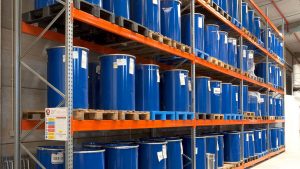
In the realm of chemical safety, there are certain substances that have earned a notorious reputation. These are the 'Toxic Six,' a group of chemicals that are commonly found in our environment, yet pose significant health risks. This article aims to shed light on these chemicals, their sources, effects on health, and ways to minimize exposure.
- Lead: A Heavyweight Hazard
Lead is a heavy metal that is often found in old paint, plumbing, and imported goods. It is a neurotoxin that can cause cognitive impairment, especially in children. To minimize exposure, consider testing your home for lead, especially if it was built before 1978.
- Mercury: The Silver Liquid Threat
Mercury is a naturally occurring element that can be found in fish, dental fillings, and some vaccines. It can cause neurological and developmental damage, particularly in unborn babies and young children. To reduce exposure, opt for fish with lower mercury levels and consider alternatives to mercury-containing products.
- Asbestos: The Hidden Killer
Asbestos is a group of minerals used in construction materials for their fire-resistant properties. However, when inhaled, asbestos fibers can cause lung diseases, including mesothelioma. If your home was built before 1980, it might contain asbestos. Professional testing and removal are recommended.
- Benzene: The Invisible Foe
Benzene is a carcinogenic compound found in gasoline, rubber, dyes, detergents, drugs, and pesticides. Chronic exposure can lead to leukemia and non-Hodgkin lymphoma. To minimize exposure, limit contact with gasoline and chemical products, and ensure good ventilation when using these substances.
- Formaldehyde: The Preservative Peril
Formaldehyde is used in pressed-wood products, certain insulations, tobacco smoke, and as a preservative in mortuaries and medical labs. It can cause respiratory problems and is a known carcinogen. To reduce exposure, opt for no-VOC or low-VOC products and maintain good indoor air quality.
- Polychlorinated Biphenyls (PCBs): The Persistent Pollutants
PCBs were used in coolants, insulating materials, and lubricants until they were banned in the 1970s. However, they persist in the environment and accumulate in the food chain, leading to neurological and developmental problems. To minimize exposure, avoid farmed salmon and older building materials.
In conclusion, the 'Toxic Six' are pervasive in our environment, but awareness and proactive measures can significantly reduce our exposure. It's crucial to stay informed about these chemicals, their sources, and their health effects. By doing so, we can make choices that protect our health and the health of future generations.


